
Issue #: 144
Published: November / December 2015
- Price per issue - digital : 5.40€Digital magazine
- Access to Multihulls World digital archives Digital archives
It took five weeks to get Libellule from New Zealand to Tierra del Fuego, in the heart of the “Roaring Forties”. At Ushuaia, the “French” crew made up of Yves German, Sylvain Martineau and Pauline Roques-Pentoy, was joined by the “Swiss”, Philipp Cottier and his mountain-climbing friends, who were hoping to be able to summit a few virgin Antarctic peaks as yet untouched by human feet. So there were 7 of us aboard. Having got through the Drake Passage, between South America and Antarctica, in early January, the first stop was Deception Island. On arriving in the White Continent, the temperature, which had still been relatively mild in Patagonia, was now rapidly falling: it rarely climbed above 5°C, and dropping to -10°C at sea level and -20°C in the mountains. On our first arrival in Antarctica, the climbers donned their skis for a trek with sealskins. On a hillside across from the anchorage there was a colony of chinstrap penguins, estimated to number 40,000 individuals. We approached them at a reasonable distance, but then a delegation of a few penguins detached themselves from the group and came a few meters towards us. With an astonishing cry they seemed to be addressing us, and discussing among themselves, in a way we would imagine extra-terrestrials would, when meeting the inhabitants of planet Earth for the first time. This process was repeated each time we came across a colony of penguins, especially further south.
We spent 24 hours there, before setting off again towards the Antarctic Peninsula, in search of a landing place, and somewhere to attack our first virgin peaks. We rounded Cape Kjellman, then further south, the Whittle Peninsula, as far as Cape Andreas. The land in Antarctica doesn’t allow itself to be easily approached, everywhere there are nothing but rock walls, white and black, or gigantic glaciers which produce enormous seracs (a pinnacle or ridge of ice on the surface of a glacier) and icebergs as big as a house, as though they were coming from a gigantic ice-maker. We eventually anchored in a little bay at the south of Trinity Island, where we had to battle our way through numerous small drifting icebergs, known as growlers, which were coming and tapping the hull. This was to be a constant feature of our whole time down here. In anchorages, as well as the anchor itself, we often used four big warps, each 100 meters long which we got before setting off. It was in this bay that for the first time we were aware of the feeling of the enormity of everything around us. Whether it was the rocks, the pack ice, the glaciers, or maybe our view out over the Antarctic Ocean. It was really only the friendly penguins who seemed small and gentle. It was from here we organized our first land expedition in real conditions. The first peak had been a modest one: the summit of Trinity Island, at 540 meters, was just a warm-up for what was to come.
Visiting our penguin friends. Shortly a delegation will be coming to ask us what we’re up to…
After this first stopover, Libellule anchored just south of Cape Andreas, where we set off for our first four-day expedition on the ice, towards Langley Peak. We felt well-prepared, in food as well as equipment, a bit tense as well, but impatient to get going for real! We spent the following three days scaling three peaks, which in all likelihood had never been climbed! After two attempts, we reached the summit of the one we called “Pic Sans Nom No.1” (Unnamed Peak No.1), with a height of 824 m. It then took us at least two attempts on skis to reach the top of Langley Peak at 977 m. Then on the morning of the third day, weather conditions improved, allowing us to reach the summit of the most technical peak, which we named “Mont Libellule”, with a height of 982 meters. From up there, the view of the Wright Ice Piedmont and the Detroit Plateau was truly incredible. It must be pointed out that even though the ascents in Antarctica may be fairly modest, they are quite technical, with numerous crevasses, not to mention the risks of seracs, avalanches and of falling into the water when tying up to the shore.
Skiing back towing our pulk sledges was great fun, and despite the fact that our landing place was cluttered with ice, we got back to the boat safely, sunburnt but happy. A shower, a Quilmes beer and a big plate of delicious lasagna and it felt like we were in Heaven. That night we slept like angels…
Next, Libellule transited the Graham Passage and the Gerlache Strait. There we saw a pod of around fifteen killer whales, including several young, as well as humpback whales swimming in couples. Then our catamaran continued her progress southwards, arriving in the evening at Paradise Harbor, where we were very soon invited to the Chilean scientific research station. There was a warm welcome from the 16 inhabitants, who showed us around the installation and also their little bar. Following a short night, we were dropped by dinghy close to Mount Banck, 710 m high, which is to the south side of Ferguson Channel. Almost two and a half hours ascent were needed before donning our crampons to make the last hundred meters which were particularly steep. Our descent was a real delight, and the three big Weddell seals basking in the sun were still there when we got back to our landing point, where Yves came to pick us up in the dinghy. We spent the night anchored off Port Lockroy.
All of a sudden, the 50 foot catamaran seems pretty small in this gigantic world…
We set off again, towards Rambler Island to wait out the wind which was forecast, with the hope of finding somewhere to land, as it seemed to be getting more and more difficult to get ashore. The last spell of good weather had been 13 days ago, with only a few rare sunny spells. It had snowed, and the deck was becoming very slippery. Sylvain had even made a snowman at the back of the boat. Libellule crossed the Antarctic Circle, located at 66°33’.73 S. Even though the weather was very bad, this was an exciting moment, duly celebrated. Libellule is likely the first catamaran to have crossed both polar circles. We spent the following two days exploring the coast between latitudes 66°30’S and 65°30’S, looking for landing spots, but without success. There was either too much ice close to the coast, or the topography just wasn’t suitable. It also became evident that the peaks we had envisaged climbing were going to turn out to be too technical, or even too dangerous. Eventually we had to abandon the idea of conquering any new virgin summits.
Each time the rare rays of sunshine came out, everything seemed completely different, and incredibly beautiful. The sight of luminous icebergs in turquoise water, in front of the white glaciers, will remain etched in our memories. When the weather improved for good, we went back up the coast and spent three days on Hotine Glacier, in Lemaire Strait, with the intention of climbing the 2,450 m Mount Matin. The name of this peak comes from the French newspaper, Le Matin, which was one of the principal sponsors of Jean-Baptiste Charcot’s expedition of 1903 to 1905. We pulled our sledges over almost 11km towards the glacier and set up a base camp at an altitude of 800m. The following morning we climbed the SW crest of Mount Matin, first with crampons, then with skis. We reached the summit after eight hours’ climbing, and up until now, it had only been summited in two stages. The view was magnificent, and the skiing back down was a pure adrenaline rush.
An impromptu visit by some whales who have come to play between our catamaran’s hulls as we approach the Lemaire Channel.
As we were approaching the Lemaire Channel, several Minke whales accompanied us, swimming under the boat. Although the others remained alongside us, one swam between the hulls to look at us, and this was an incredibly moving moment. On Petermann Island, the presence a penguin colony signified calmer conditions, and this gave us the idea of going for a dive, even though the visibility wasn’t great, at less than 4 meters. Again, it was Phillip and Conrad who donned their thick wetsuits before jumping into the freezing water, making sure they were equipped with a long stick, to ward off any leopard seals which might be too inquisitive. Several penguins swam beneath us at great speed. After around 25 minutes, the cold became unbearable, and we decided to (quickly!) get back on the boat. After pulling off our wetsuits, we took a “long” hot shower to defrost our frozen extremities. We’ll remember that dive for the rest of our lives.
One of the reasons for this trip to Antarctica: to climb to virgin peaks, such as this one, which we christened “Mont Libellule”.
Next, we visited a Ukrainian research station, Vernadsky, a former British base, at the time called Faraday. It was occupied by twelve people, 7 scientists and 5 technicians. They had built a sauna, and were keen for us to try it out. Obviously we jumped at the opportunity to warm ourselves up, having endured freezing temperatures for weeks, as much on board Libellule where the heating system had broken down, as in our camps at altitude.
The time had come to take a serious look at the weather forecast, and wait for a suitable window to head back towards Cape Horn. It rained for an entire day, and we made the best of it by going and anchoring in what is really the only true good anchorage in Antarctica, at Enterprise Island, where you tie up alongside a big, ageing wreck. We all slept well there, without the need for night watches to keep a lookout for ice. Then the awaited weather window arrived, not extraordinary, but doable. We were a little tense at the idea of seeing how the Drake Passage was going to treat us. The forecast was giving a mix of winds from the east, north, west and northwest, from 10 to 30 knots with a swell of 2 to 4 meters. It meant we had to slip between two depressions, and if things went wrong, we could easily have found ourselves somewhere off the Falkland Islands…
So we set off, and you’re probably wondering how the Drake was this time? Drake Lake or Drake Shake? In the end it wasn’t too bad, but fairly strong all the same, with winds up to 35 knots and waves up 4 meters - just enough to make us ill. On the sixth day, Cape Horn, legendary and impressive, came over the horizon and for the first time in five weeks and two thousand miles we saw land which wasn’t covered with ice. A hundred miles further on and we were in calmer waters which led us to Ushuaia.
This Antarctic cruise had been a great trip, and we’ll definitely be back one day!
In Antarctica, the weather is rarely nice: you have to simply deal with it, so the sailing can become… tricky!
All vessels bound for the Antarctic have to have authorization issued by either by the country of the skipper’s nationality or by the boat’s flag state. It must be remembered: you have to be completely self-sufficient in terms of fuel and all victuals. It is essential to be well-stocked with spare parts and tools. The research stations are not there to help out yachtsmen. Ashore, you must leave no trace that you were ever there: the adage being, “if you bring it with you, take it away with you”. The Antarctic Treaty applies to the area south of 60°S, and in this zone, nothing must be discharged, to the point that automatic pumps must be deactivated. Any biodegradable waste can only be thrown overboard north of 60°S. There are certain areas visitors are prohibited. Fires are prohibited, as are weapons, explosives, hunting and fishing. Libellule flies the ensign of Switzerland, a country which has ratified the treaty, but is yet to sign the Protocol on Environmental Protection to the Antarctic Treaty. Also Philipp wanted to make sure everything was in order with the two nations who lay claim to the Antarctic Peninsula, Chile and Argentina, by visiting Ushuaia (Argentina) and then Puerto Williams (Chile)…
www.iaato.org
66°33’ South: Is Libellule the first production catamaran to cross the Antarctic Circle?
A trip such as this in a catamaran is beyond the scope of most cruisers. This extreme cruise was undertaken by a very experienced skipper and crew, following other high-latitude voyages, including Greenland and the Northwest Passage. The catamaran (a Salina 48) was particularly well prepared, notably with 7 layers of Kevlar added to the bows and 3 at the waterline as well as a general complete reinforcing.
Northbound again: Cap Horn signals our return towards civilization…
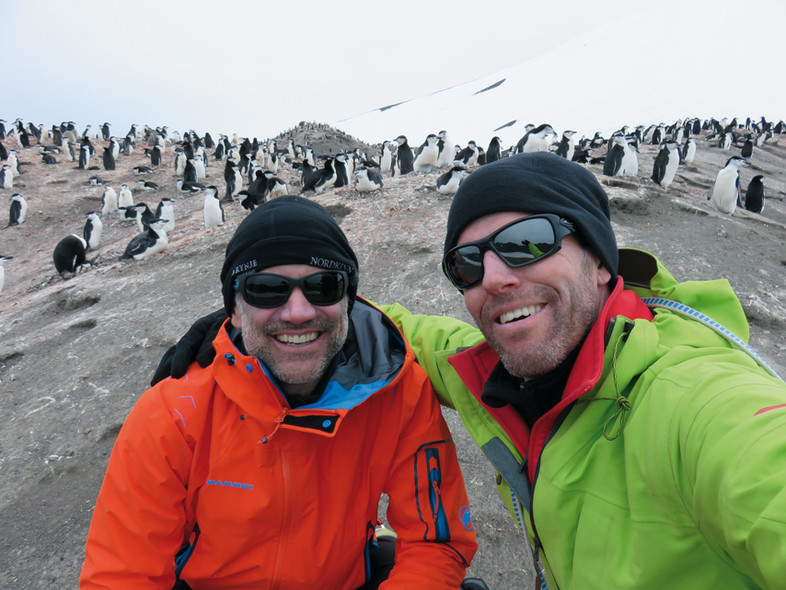
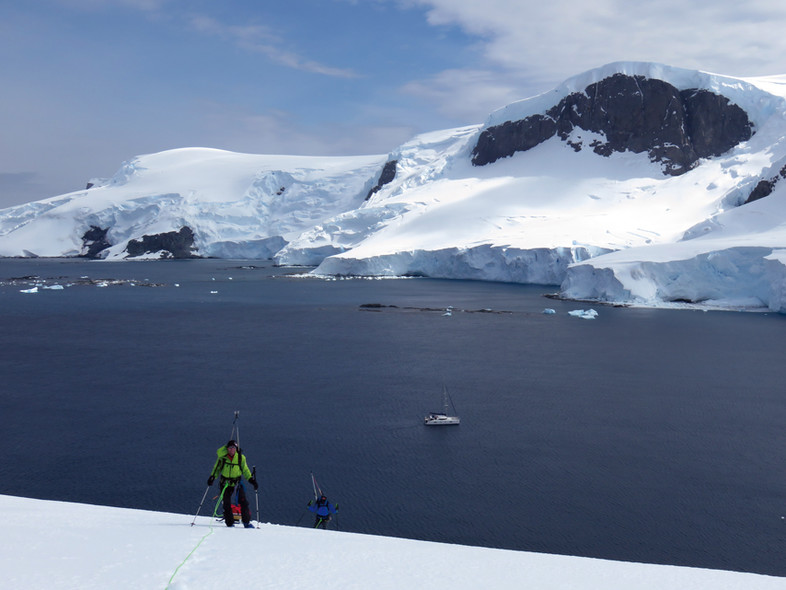
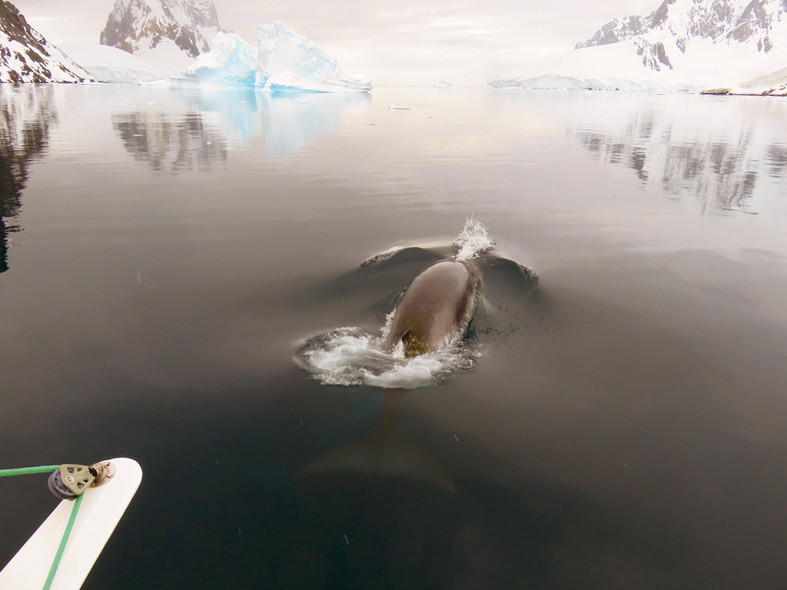
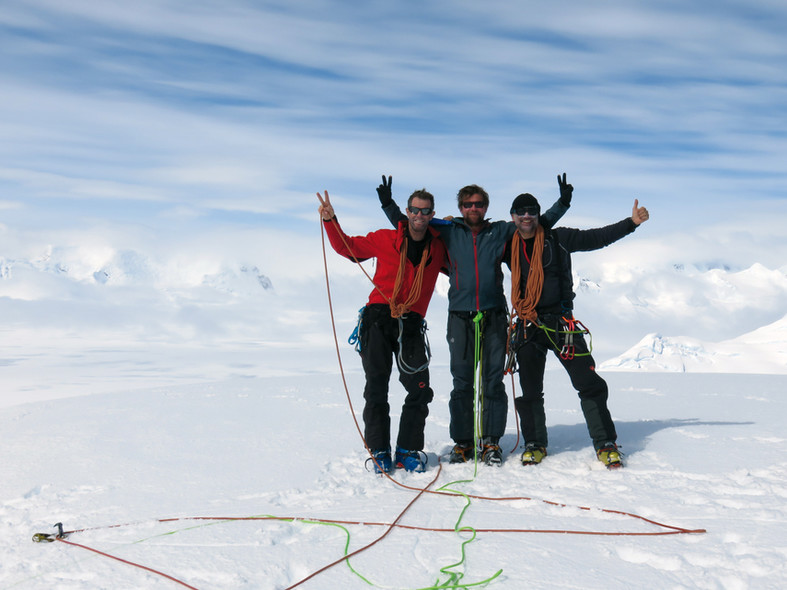
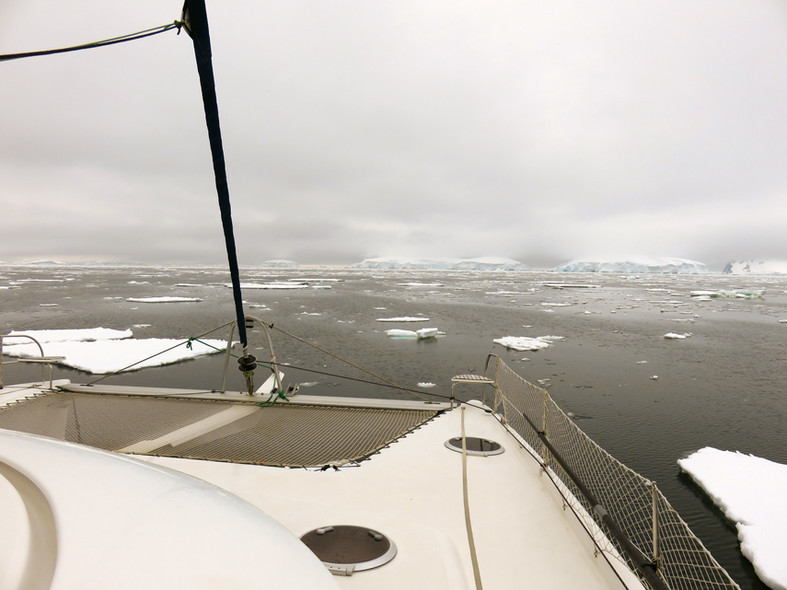
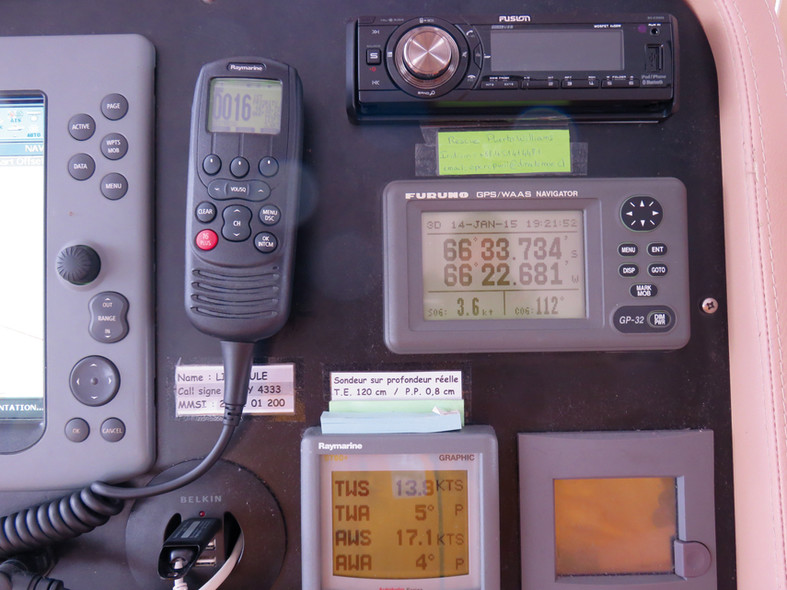
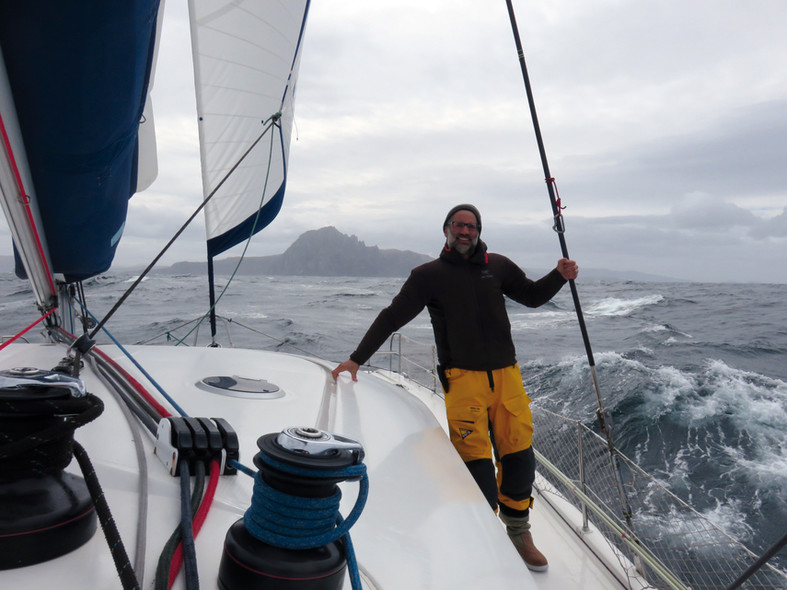
What readers think
Post a comment
No comments to show.